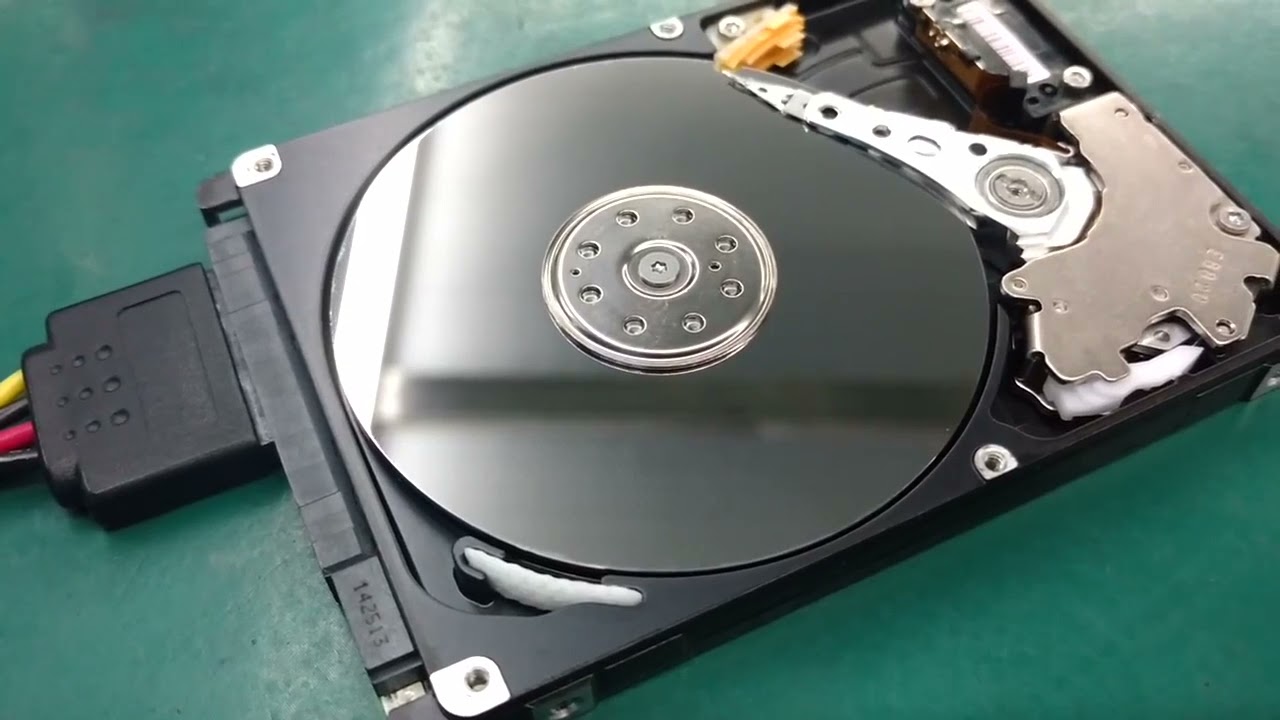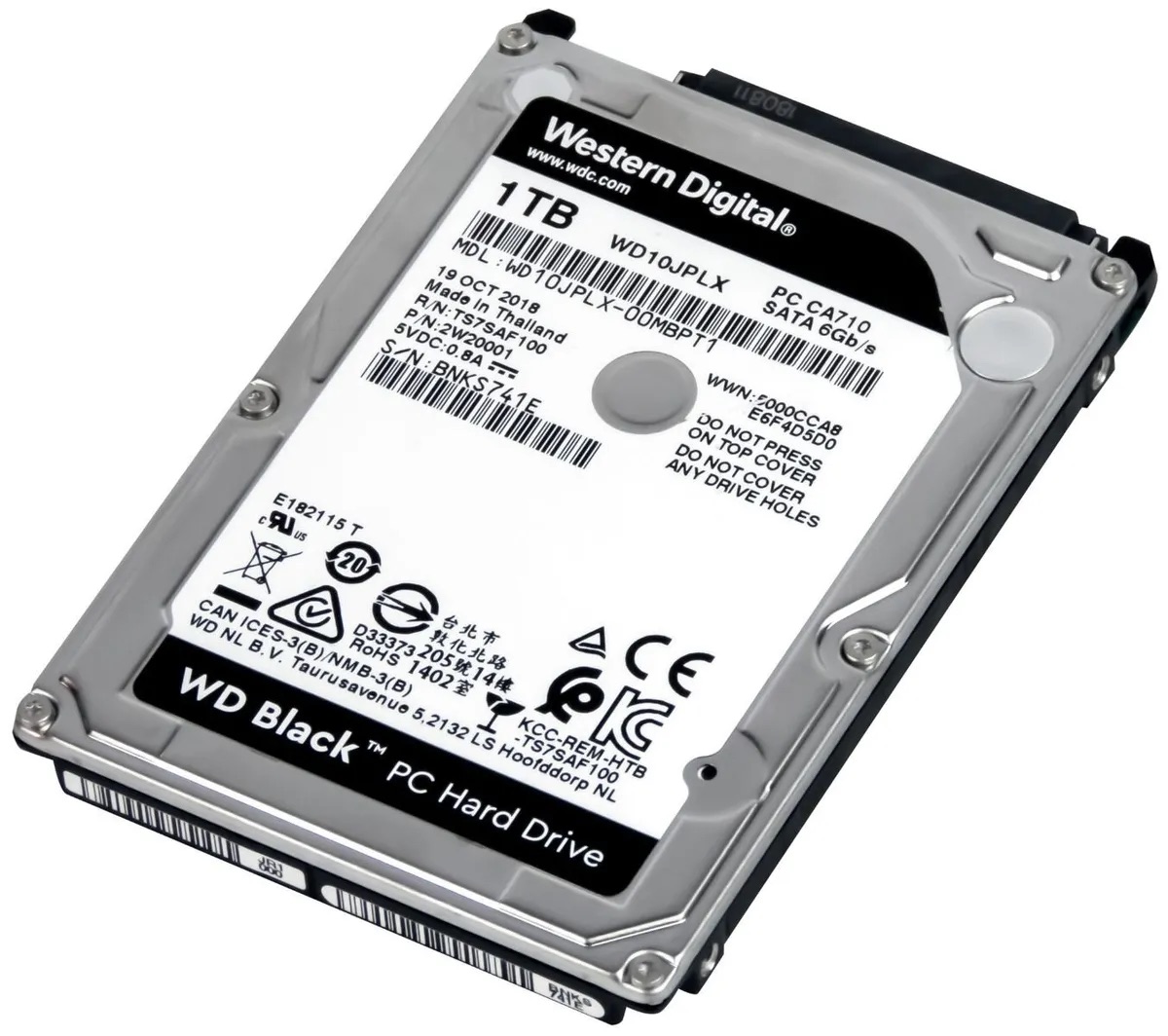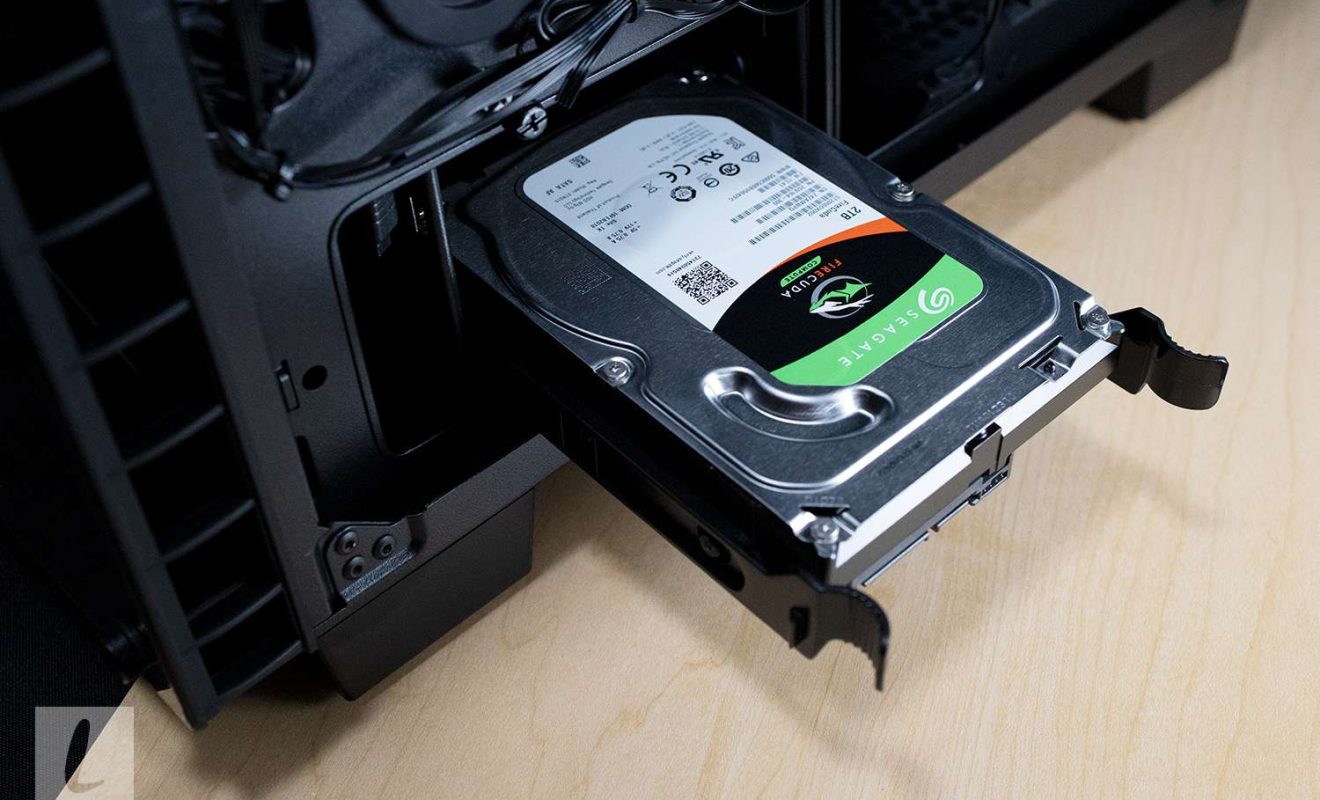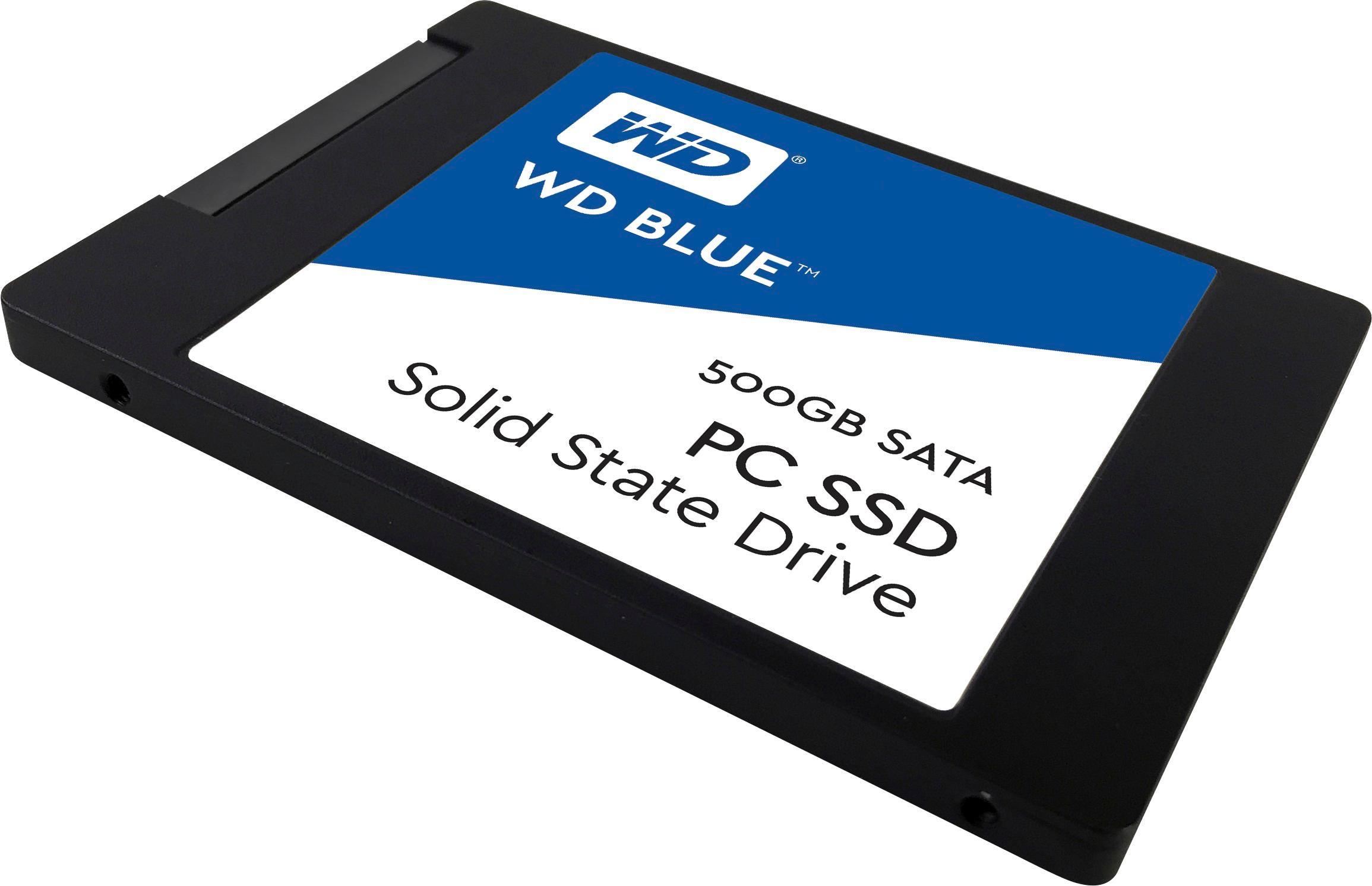Introduction
When it comes to storing and accessing data on our computers, hard disk drives (HDDs) have been the go-to technology for decades. They are found in almost every computer, from laptops to desktops, and even servers. But have you ever wondered how these devices actually store and retrieve data? In this article, we will explore the inner workings of hard disk drives and learn about the fascinating technology behind them.
At a basic level, a hard disk drive is a non-volatile storage device that uses magnetic storage to store digital information. It consists of several components that work together to ensure efficient data storage and retrieval. Understanding these components and how they interact is crucial to understanding how a hard disk drive operates.
In this article, we will delve into the various components of a hard disk drive, such as the spindle motor, actuator arm, and read/write head. We will also explore the role of magnetism in data storage and how it allows the hard disk drive to retain information even when the power is turned off.
Furthermore, we will discuss the structure and organization of the disk platters and examine the process of reading and writing data on a hard disk drive. This includes understanding the concept of tracks, sectors, and clusters, which play a crucial role in organizing and accessing data efficiently.
Moreover, we will also touch upon the factors that can affect the storage and retrieval of data, such as disk fragmentation, bad sectors, and disk errors. Understanding these factors can help computer users optimize their hard disk drives and ensure the longevity and reliability of their data storage devices.
Lastly, we will compare hard disk drives with other storage technologies, such as solid-state drives (SSDs), to highlight their respective advantages and disadvantages. This will help readers gain a comprehensive understanding of the different options available for data storage and make informed decisions depending on their specific needs.
Now that we have an overview of what to expect in this article, let’s dive deeper into the fascinating world of hard disk drives and unravel the mystery behind how these devices store and retrieve data.
The Basics of Hard Disk Drives
Before diving into the inner workings of a hard disk drive, it’s important to understand some fundamental concepts. At its core, a hard disk drive is a storage device that allows for the reading and writing of digital data on a magnetic surface. It consists of several essential components that work together to store and retrieve data efficiently.
One of the key components of a hard disk drive is the spindle motor, which is responsible for spinning the disk platters at a high speed. The disk platters, typically made of a rigid material such as aluminum or glass, are the surfaces where the data is stored magnetically.
In addition to the spindle motor, a hard disk drive also contains an actuator arm, which is responsible for positioning the read/write head accurately. The read/write head is a tiny, electro-mechanical device that hovers just above the disk platters. Its primary function is to read data from or write data onto the magnetic surface.
The read/write head works in conjunction with the various tracks, sectors, and clusters that make up the structure of the disk platters. Tracks are concentric circles on the platters, with each track divided into smaller sections called sectors. A cluster, on the other hand, is a group of sectors that is treated as a single unit for data storage and retrieval purposes.
When data needs to be stored on a hard disk drive, the read/write head positions itself over the correct track and sector on the appropriate disk platter. An electrical current is then passed through the coil of the read/write head, creating a magnetic field that magnetizes the desired portion of the disk. This process is known as writing data.
Similarly, when data needs to be retrieved from the hard disk drive, the read/write head is positioned over the relevant track and sector. The magnetic changes on the disk surface induce a small electrical current in the coil of the read/write head, which is then converted into digital data. This process is known as reading data.
It’s important to note that the speed at which the disk platters spin, as well as the accuracy of the read/write head positioning, play a crucial role in the overall performance of a hard disk drive. Higher spindle speeds and precise positioning result in faster data access and transfer rates.
While hard disk drives have been the primary choice for data storage for many years, new technologies such as solid-state drives (SSDs) have emerged as viable alternatives. SSDs, which use flash memory instead of spinning disks, offer faster read and write speeds, lower power consumption, and enhanced durability.
Despite the competition from SSDs, hard disk drives remain a popular choice due to their affordability and high storage capacity. As technology continues to evolve, it will be interesting to observe how hard disk drives adapt and improve to meet the growing demands of data storage.
Components of a Hard Disk Drive
A hard disk drive is composed of several crucial components that work together to store and retrieve data. Understanding these components is essential to gain a comprehensive understanding of how a hard disk drive operates.
One of the key components of a hard disk drive is the spindle motor. This motor is responsible for spinning the disk platters at a high speed. The disk platters, typically made of a rigid material such as aluminum or glass, are the surfaces where data is magnetically stored.
In addition to the spindle motor, a hard disk drive also contains an actuator arm. This arm is attached to a voice coil motor, which allows the arm to move swiftly and accurately across the disk platters. The actuator arm is responsible for positioning and maintaining the correct distance between the read/write head and the surface of the platters.
The read/write head is an electro-mechanical device that hovers just above the disk platters. Its purpose is to read data from or write data onto the magnetic surface of the platters. The read/write head consists of a microscopic coil that interacts with the magnetic fields on the platters to perform its functions.
To protect the delicate read/write head and the disk platters, a hard disk drive also has an air filter and a breather hole. The air filter prevents dust and other particles from entering the drive and causing damage, while the breather hole allows for pressure equalization inside the drive to prevent any pressure-related issues.
An important component that enables the read/write head to access different parts of the disk platters is the stepper motor. The stepper motor provides the precise movement required by the actuator arm, allowing it to move the read/write head to the correct position on the platters for reading or writing data.
The electronics board, also known as the printed circuit board (PCB), is another vital component of a hard disk drive. This board contains the controller chip, which acts as the brain of the drive, governing its overall operation and facilitating data transmission between the drive and the computer.
Lastly, a hard disk drive has a set of connectors that allow it to be connected to the computer or other devices. These connectors typically include a power connector that provides electrical power to the drive and a data connector, such as a SATA or PATA interface, that enables data transfer between the drive and the computer.
Understanding the components of a hard disk drive is crucial as it provides a foundation for comprehending the intricate processes involved in storing and retrieving data. Each component plays a unique and vital role in ensuring the efficient operation of the drive.
How Data is Stored on a Hard Disk Drive
A hard disk drive (HDD) stores data using a fascinating process that relies on the principles of magnetism. Understanding how data is stored on a hard disk drive is key to comprehending the intricacies of this technology.
The primary method used for data storage on a hard disk drive is magnetic recording. Each disk platter within the drive is coated with a thin layer of magnetic material. This material can be magnetized in either of two directions, representing the binary data values 0 and 1.
The read/write head, situated above the surface of the platters, plays a crucial role in the process. When data needs to be written onto the drive, an electrical current is sent to the read/write head, allowing it to generate a magnetic field. This magnetic field magnetizes tiny portions of the magnetic coating on the disk platter, representing the data being written. The magnetization persists even when the power to the HDD is turned off, making the data non-volatile.
For reading data from the hard disk drive, the read/write head performs the reverse process. It hovers above the disk platter and detects changes in the magnetic field as it moves over the magnetized sections. These changes induce varying voltages in the coil of the read/write head, which are then converted into digital data that can be interpreted by the computer’s operating system.
The magnetic field on the disk platter is organized into concentric circles called tracks. These tracks are further divided into smaller sections known as sectors. Each sector can hold a fixed amount of data, typically around 512 bytes.
To enable efficient data access and retrieval, the file system used by the operating system of a computer organizes data into clusters. These clusters are groups of sectors that are treated as a single unit for storing and retrieving data. By organizing data into clusters and utilizing file allocation tables, the operating system can keep track of where specific files and folders are stored on the hard disk drive.
It’s worth mentioning that the physical size of a hard disk drive, including the number of disk platters it contains, the density of data on each platter, and the speed at which the platters spin, significantly impact its storage capacity and performance. Through technological advancements, hard disk drives have increased their storage capacity while maintaining relatively low costs.
While hard disk drives have been the main storage technology for many years, solid-state drives (SSDs) have gained popularity due to their faster data access times and improved durability. SSDs use flash memory chips instead of moving parts, allowing for quicker data access and minimized risk of mechanical failure.
Despite the competition from SSDs, hard disk drives continue to be widely used due to their affordability and large storage capacities. With ongoing advancements in technology, it will be exciting to see how hard disk drives evolve to meet the ever-growing demands for data storage.
The Role of Magnetism in Data Storage
Magnetism plays a vital role in the process of data storage on a hard disk drive (HDD). By harnessing the principles of magnetism, HDDs can reliably store and retrieve vast amounts of digital information.
At the heart of a hard disk drive’s data storage capability is its ability to manipulate magnetic fields. The disk platters, which are coated with a thin layer of magnetic material, allow for the magnetization of specific regions to represent binary data values. This means that areas on the platters can be magnetized to represent a 1 or demagnetized to represent a 0.
The read/write head, positioned above the platters, is an essential component that interfaces with the magnetic fields. When writing data, an electrical current is passed through a coil in the read/write head, causing it to generate a magnetic field. The magnetic field interacts with the magnetic coating on the platters, magnetizing specific areas according to the digital data being written. This magnetization remains even after the power to the drive is turned off, making it a non-volatile form of storage.
The process of reading data is achieved through the reverse operation. The read/write head detects changes in the magnetic field as it moves across the magnetized areas of the platters. These variations induce tiny electrical currents in the coil of the read/write head. These currents are then converted into digital data that can be interpreted by the operating system of the computer.
One crucial property utilized in magnetic storage is the ability of materials to retain their magnetization even in the absence of an external magnetic field. This property is known as magnetic coercivity. Hard disk drives rely on materials with high coercivity to ensure that the stored data remains stable over time.
To further enhance data storage capacity, manufacturers have employed various techniques such as increasing the areal density. Areal density refers to the amount of data that can be stored per unit area of the disk platter. This is achieved by reducing the size of each magnetized region and packing more of them onto the platter’s surface. Advancements in technology have allowed for significant increases in areal density over the years, enabling hard disk drives to offer larger storage capacities.
While magnetism in data storage has been the foundation of hard disk drives for decades, emerging technologies, such as solid-state drives (SSDs), utilize different mechanisms like electrical charges stored in flash memory cells. These technologies offer advantages such as faster data access times and improved durability. However, hard disk drives remain a popular choice due to their affordability and high storage capacities.
Understanding the role of magnetism allows us to appreciate the intricate process of data storage on hard disk drives. As technology continues to advance, it will be fascinating to witness further innovations in data storage and the ongoing interplay between magnetic and electrical storage mechanisms.
Disk Platters and Data Organization
The disk platters are a critical component of a hard disk drive (HDD) and play a vital role in organizing and storing data. Understanding how data is organized on the disk platters helps us grasp the efficient retrieval and management of information on a hard disk drive.
Disk platters are typically made of a rigid material such as aluminum or glass and are coated with a thin layer of magnetic material. These platters are stacked vertically within the hard disk drive enclosure and are spun rapidly by the spindle motor.
To effectively store and retrieve data, the surface of each disk platter is divided into concentric circles called tracks. Each track on the platter represents a specific storage location for data. Tracks closer to the center of the platter have a smaller circumference and a higher density of data, while tracks further from the center have a larger circumference and a lower density of data.
Each track is further divided into smaller sections known as sectors. Sectors are independent units of storage that can hold a fixed amount of data, typically around 512 bytes. These sectors are the smallest addressable units on the disk platter and are used to organize the data for efficient retrieval.
Clusters, also known as allocation units, are groups of multiple sectors that are treated as a single unit for storing and retrieving data. The file system used by the operating system of a computer determines the cluster size. When a file is stored on the hard disk drive, it occupies one or more clusters, depending on its size.
File allocation tables, or similar data structures, are used by the operating system to keep track of the file locations on the disk platters. These tables map the logical addresses of files to their corresponding physical locations on the disk. Therefore, when a file needs to be accessed, the file system first consults the file allocation tables to determine the physical location of the file on the disk platters.
Physically locating and accessing specific data on the disk platters is facilitated by the actuator arm, which is responsible for positioning the read/write head accurately. The read/write head hovers just above the surface of the disk platters, allowing it to read or write data to specific tracks and sectors. The precision of the actuator arm movement and the speed of the read/write head positioning are essential factors in ensuring efficient data access and retrieval.
As technology has advanced, hard disk drives have increased their storage capacity by adding more disk platters and improving areal density. Higher areal density means more data can be stored on each track, leading to greater storage capacity within the same form factor.
Understanding the organization of data on disk platters provides insight into the complex structure and efficient retrieval of information on a hard disk drive. As technology continues to evolve, it will be intriguing to witness further advancements in data organization and storage techniques.
Reading and Writing Data on a Hard Disk Drive
Reading and writing data on a hard disk drive (HDD) is a complex process that involves precise movements and interaction between various components. Understanding how data is read from and written to a hard disk drive provides insight into the inner workings of this storage technology.
When data needs to be written to a hard disk drive, the first step is to determine the location where the data will be stored. The file system of the operating system allocates a specific address known as a logical block address (LBA) for the data. The LBA represents a specific sector on the disk platters where the data will be magnetically stored.
Once the LBA is determined, the read/write head positions itself accurately over the corresponding track and sector on the disk platters. The actuator arm, controlled by the voice coil motor, moves the read/write head swiftly and precisely to the desired location.
When the read/write head is correctly positioned, an electrical current is passed through the coil in the read/write head. This current generates a magnetic field that interacts with the magnetic coating on the disk platter. As a result, the magnetic particles on the disk platter align in a way that represents the binary data being written. This process is commonly referred to as magnetization.
Different magnetic orientations are used to represent binary values. For example, one orientation may represent a 0, while the opposite orientation represents a 1. By selectively magnetizing areas of the disk platter, the HDD can store a wide range of data.
Reading data from a hard disk drive follows a similar principle but in reverse. The read/write head moves to the specific track and sector where the desired data is located. As the read/write head hovers just above the surface of the disk platters, it detects the magnetic changes in the aligned particles.
These magnetic changes induce tiny electrical currents in the read/write head’s coil. These electrical signals are then amplified and converted into digital data. The operating system of the computer can interpret this data and present it in a usable format, allowing users to access the information stored on the hard disk drive.
The speed and accuracy of the read/write head positioning are crucial for efficient data access and retrieval. Faster speeds and precise positioning enable quicker reading and writing of data, resulting in improved overall performance of the hard disk drive.
It’s important to note that the read/write head operates in close proximity to the surface of the disk platters. Any physical contact between the two can lead to potential damage and data loss. To mitigate this risk, hard disk drives employ an air cushion created by the rotating platters, which keeps the read/write head hovering just above the surface without making contact.
Reading and writing data on a hard disk drive is a complex process that relies on precise movements, magnetism, and the interaction of various components. Advances in technology continue to enhance the speed and efficiency of this process, ensuring reliable data storage and retrieval in modern storage devices.
Factors Affecting Data Storage and Retrieval
Several factors can impact the storage and retrieval of data on a hard disk drive (HDD), influencing the overall performance and reliability of the device. Understanding these factors is essential for optimizing data storage and ensuring efficient data access.
One key factor that affects data storage and retrieval is disk fragmentation. Over time, as files on the hard disk drive are modified or deleted, the data can become fragmented, meaning that the file’s data is stored in non-contiguous sectors on the disk platters. Fragmentation can lead to slower data access times since the read/write head must move to multiple locations on the disk to retrieve a complete file. Regular disk defragmentation, through built-in tools or third-party software, can help alleviate this issue and improve overall performance.
Another factor is the presence of bad sectors. Bad sectors are areas on the disk platters that are damaged or unable to reliably store data due to physical or manufacturing defects. When the read/write head encounters a bad sector, it may result in errors or data loss. Hard disk drives often have built-in mechanisms to detect and mark bad sectors, preventing them from being used for data storage. However, an increasing number of bad sectors over time can indicate a failing drive and may require a replacement.
Disk errors can also impact data storage and retrieval. These errors can occur due to various factors, such as power fluctuations, physical shocks, or manufacturing defects. Hard disk drives employ error correction codes (ECC) to detect and correct these errors. However, if the number of errors exceeds the ECC’s capability, data integrity may be compromised. Periodic data backups and monitoring for disk errors are recommended to ensure data reliability and minimize the risk of data loss.
The temperature of the hard disk drive can also influence its performance and reliability. Excessive heat can cause the disk platters and other components to expand, potentially leading to read/write head misalignment or disk warping. It is advisable to maintain optimal operating temperatures to ensure the longevity and reliability of the hard disk drive. Adequate airflow and cooling within the computer enclosure can help regulate the temperature and prevent overheating.
The speed at which data is read from or written to the hard disk drive can be affected by the rotational speed of the disk platters. Hard disk drives commonly operate at either 5,400 or 7,200 rotations per minute (RPM). Higher RPM drives generally offer faster data transfer rates, resulting in quicker access to stored information. However, the faster rotational speeds may also result in increased power consumption and noise generation.
In addition to these factors, the interface used to connect the hard disk drive to the computer can influence data transfer speeds. Common interfaces include SATA (Serial ATA) and PATA (Parallel ATA), with newer models often incorporating faster versions of these interfaces. Choosing a compatible and faster interface can enhance data transfer rates and improve overall performance.
Optimizing and maintaining a hard disk drive involves considering these factors. Regular disk maintenance, monitoring for errors, managing disk fragmentation, and ensuring adequate cooling contribute to a better user experience, extend the life of the hard disk drive, and safeguard important data stored on the device.
Comparing Hard Disk Drives to Other Storage Technologies
While hard disk drives (HDDs) have been the standard for data storage for many years, other storage technologies have emerged as viable alternatives, each with its own advantages and disadvantages.
One popular alternative to HDDs is solid-state drives (SSDs). Unlike HDDs, which rely on spinning disks and mechanical read/write heads, SSDs use flash memory—a type of non-volatile memory—to store data. This difference in technology brings several benefits. SSDs offer much faster data access times, resulting in quicker boot-up and application loading times. They are also more resistant to physical shock and vibration since they have no moving parts. Additionally, SSDs consume less power and generate less heat than HDDs, making them ideal for portable devices with limited battery life.
However, there are drawbacks to using SSDs compared to HDDs. First and foremost is the cost. SSDs are generally more expensive per gigabyte of storage capacity compared to HDDs. This higher cost has limited the adoption of SSDs in larger capacity storage applications. Another limitation is the finite life span of the flash memory cells in SSDs. Each cell has a limited number of write cycles before it degrades. Although advancements in technology have increased the endurance of SSDs, the lifespan is still a consideration for prolonged and intensive use.
In addition to SSDs, other storage technologies such as cloud storage and network-attached storage (NAS) have become popular alternatives. Cloud storage allows users to store and access data remotely through an internet connection. It offers the convenience of accessing files from anywhere and provides scalable storage options. NAS, on the other hand, involves a dedicated network device specifically designed for file storage and sharing. It allows for centralized data management and easy access across multiple devices on the network.
Compared to HDDs, both cloud storage and NAS offer advantages in terms of flexibility, scalability, and data redundancy. However, they may also face challenges related to data security, privacy concerns, and reliance on internet connectivity. Additionally, accessing and transferring large amounts of data from the cloud or NAS can be slower compared to local storage with HDDs.
In summary, while hard disk drives remain a reliable and cost-effective storage solution, other technologies such as solid-state drives, cloud storage, and network-attached storage have gained traction in specific use cases. SSDs offer faster performance, lower power consumption, and improved durability, but at a higher cost. Cloud storage and NAS provide flexibility and scalability, but may have limitations regarding data security and internet dependency. Choosing the right storage technology ultimately depends on individual needs and preferences, taking into consideration factors such as cost, performance, capacity, and data access requirements.
Conclusion
In conclusion, understanding how data is stored and retrieved on a hard disk drive (HDD) provides valuable insights into the inner workings of this fundamental storage technology. From the basics of HDDs to the role of magnetism in data storage, the components of a hard disk drive, and the organization of data on disk platters, each aspect contributes to the overall functionality and efficiency of an HDD.
Factors such as disk fragmentation, bad sectors, disk errors, temperature, rotational speed, and interface connectivity can significantly impact the storage and retrieval of data on a hard disk drive. Accounted for and managed properly, these factors contribute to the optimization and longevity of the HDD, ensuring reliable and efficient data access.
In comparison to other storage technologies, hard disk drives face competition from solid-state drives (SSDs) and alternative solutions like cloud storage and network-attached storage (NAS). SSDs offer faster performance and improved durability but come at a higher cost. Cloud storage and NAS provide flexibility and scalability but may have limitations in terms of data security and reliance on internet connectivity.
Ultimately, the choice of storage technology depends on a variety of factors, including budget, performance requirements, storage capacity, and data access needs. Hard disk drives have traditionally been a popular choice due to their affordability, large storage capacities, and wide availability. However, as technology continues to advance, alternatives such as SSDs, cloud storage, and NAS are gaining popularity in specific use cases and environments.
Whether you choose a hard disk drive or explore other storage technologies, it’s essential to consider your specific needs and strike a balance between cost, performance, data security, and scalability. As technology evolves, storage solutions will continue to evolve as well, providing even greater options for data storage and retrieval.

























